What’s good for you should taste good, and that’s why almost anyone should enjoy a bit of Elderberry in their life. As the regulators clamp down on enterprising members of cottage industries, we have to be creative in helping our family, friends and neighbors obtain nature’s nutritional benefits. In the case of elderberry, the best way is to empower people to do their own compounding in the kitchen.
If you didn’t already have interest in using elderberries to (deliciously) assist you through the cold and flu season, you probably wouldn’t be reading this. Those who want motivation or a reminder can review our first Elderberry post from this past summer, when bushes were producing berries. Be sure to get that bonus oxymel recipe which comes from
at Brunette Gardens.The price of elderberries and the commercially available mixtures is reaching stratospheric levels. We’re seeing 30 dollars for 50 servings of the extracted equivalent of 3.8 grams of elderberries. We think that you can save yourself a bit of the cost and obtain a natural, preservative free product by making your own. You’ll save the most if you can find your own elderberries. It’s a bit hard to obtain the dried berries for a good price unless you buy at least a pound (454 g.) of them. Weedom does both of the above, depending on the success of our growing season. This year it’s mostly dried berries. You could buy a pound from Mountain Maus. We like the quality of their elderberries the most, and they have no idea of this.
The recipe and quantity below, which should result in about 12 fluid oz. of final product will give you approximately 70 servings of similar elderberry content to the commercial products, based on the assumption that naturally dried elderberries have 2/3 of the water removed. Freeze drying and good commercial dehydrators can remove even more of the moisture than that. This small recipe gives a more concentrated product with suggested serving size of 1 teaspoonful (5 ml.) rather than 2-3 teaspoonsful, (10-15ml). Sambucus gummies have a serving size of 2 gummies for an similar amount of elderberry content.
Assemble all the goodies for elderberry syrup. The spices are optional, but add flavor and their own beneficial qualities to the syrup.
Ingredients:
dried elderberries 90 grams or 3/4 cup
dried ginger root 1 rounded tablespoonful
cassia cinnamon stick 1
green cardamom pods 5
black peppercorns 1 rounded quarter teaspoonful
cloves 8 whole buds
water 16 fluid ounces (480 ml.)
honey 3 fluid oz, (90 ml.)
At weedom, we like to boil everything. ( Beware, we have some very large pots and a cauldron :-D ) It’s our way of sanitizing containers and utensils so that whatever we make lasts longer. So we boil the cleaned jars or bottles (and lids) in which the elderberry syrup will be stored, and funnel or whatever will touch the finished syrup. (We like to boil a wire mesh strainer and a measuring cup too.) Some others might choose dry heat (oven) to sanitize. We also boil the water used to make up the volume of elderberry syrup if dilution is needed or desired.
We start by boiling a pot full of water large enough for the containers, funnel lids, and strainer, and add those items. Let them boil and stay hot until shortly before you need to use them.
To a small sauce pot, add 16 oz. of water the 90 grams of dried elderberries and the spices. (If your sauce pot has a pour spout, you’re a lucky camper.) Bring your mixure to a boil, and simmer for 30 minutes, stirring frequently to avoid burning berries. (No lid on this pot!) We like to do whatever needed minor kitchen jobs while we’re waiting 30 minutes. (Perhaps use a tea kettle or microwave to heat some additional water to boiling if you want or need to further dilute your elderberry juice. )
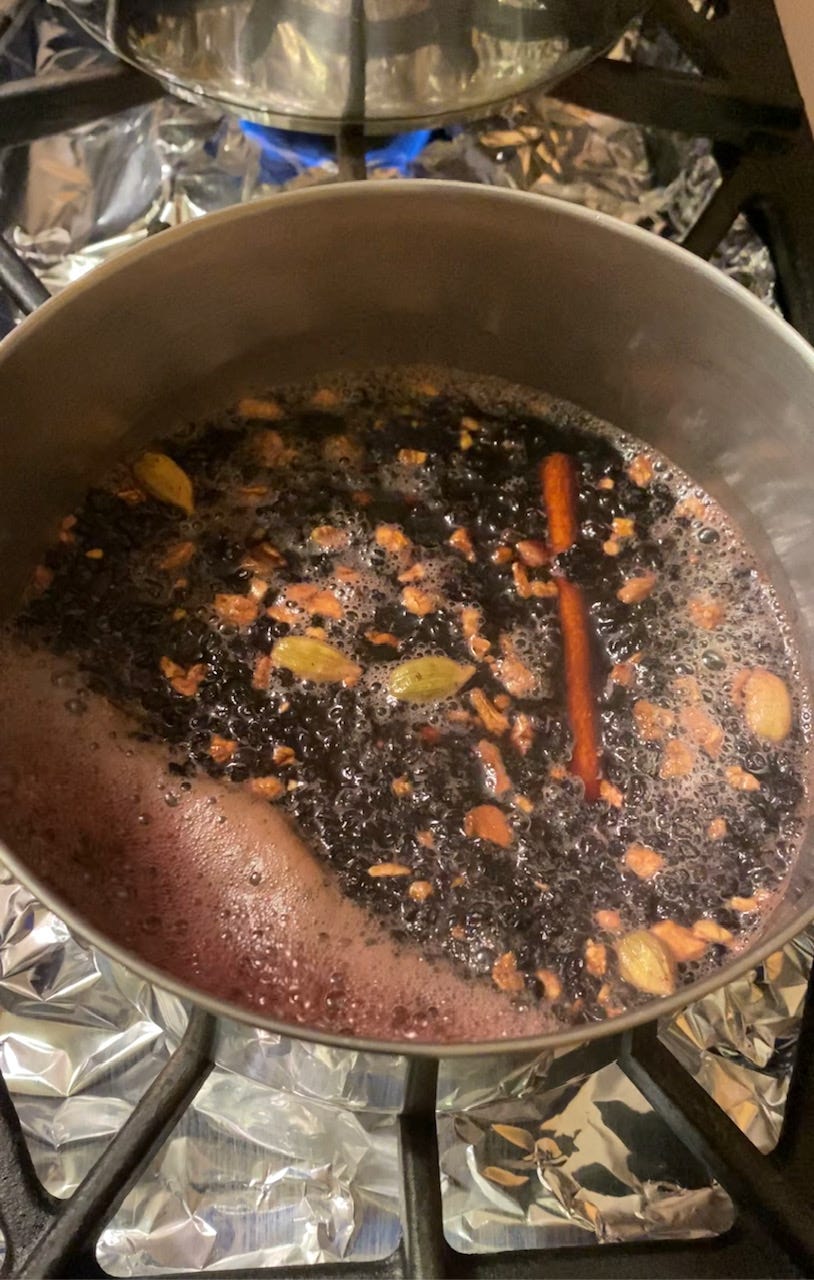
Place the strainer over a 2 cup, (500ml) measuring cup. Add the elderberry juice and mash (take out the cinnamon stick first), and then squash the berries with a spoon to squeeze out as much juice as you can. You will likely get about 9 ounces of fluid from this process. If not, you can add a little boiled water onto the elderberries and squeeze until you get your 9 ounces.
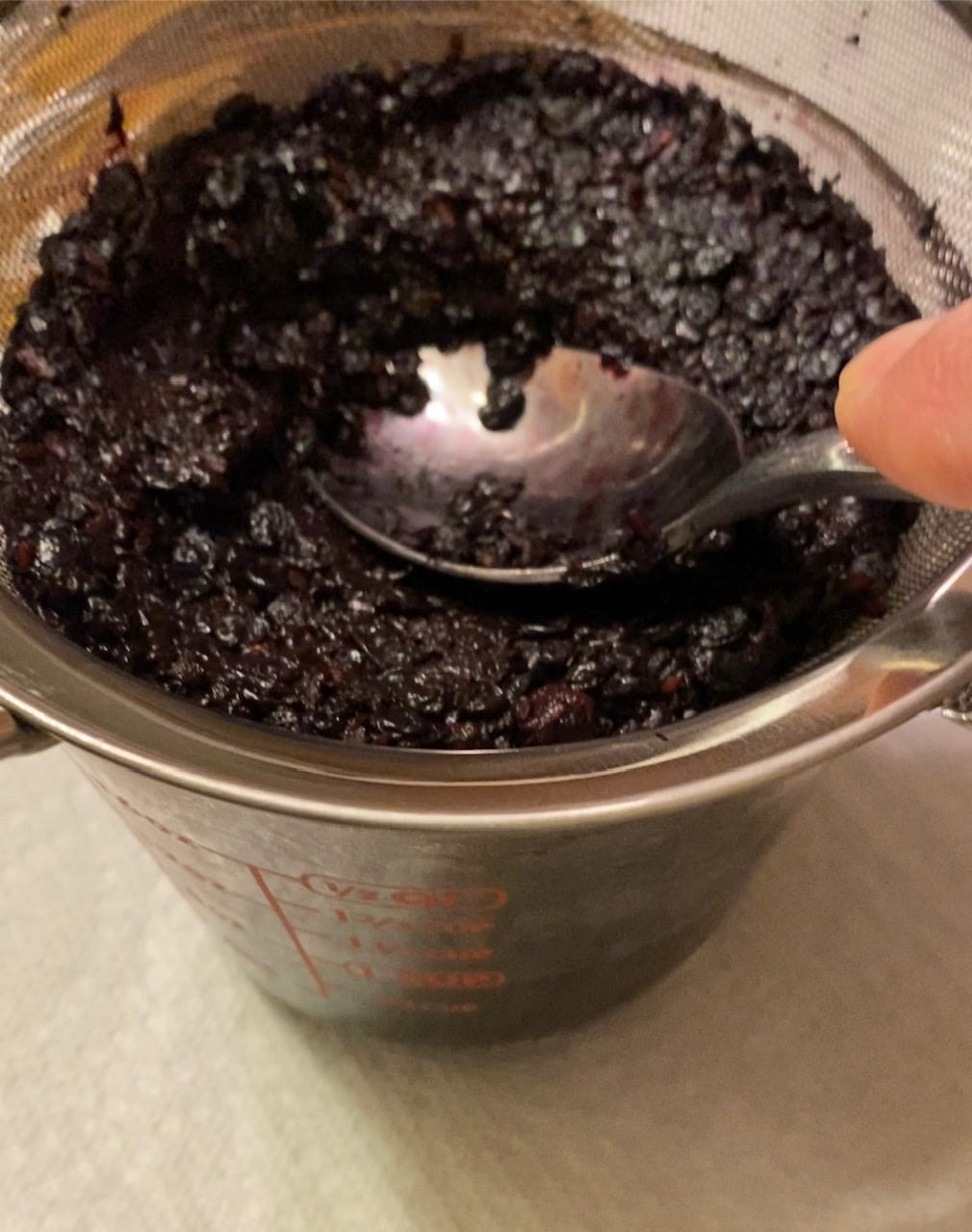
Pour this back into the cleaned sauce pot and heat it. Add 3 ounces of honey. When it’s mixed thoroughly, and brought just to boiling, turn off the heat. Transfer the solution, while still hot, into your sanitized containers using the boiled funnel if needed. Cap and label the containers with contents and date made, and store it in the refrigerator.
We have advised that our refrigerated mixture is good for 4 months, (and personally have used it a lot longer than that with zero adverse consequences).
You can, for example, choose to dilute your syrup to a 16 oz volume. This would mean that you squeeze some additional boiled water over your elderberry mash squeeze it through for a juice volume of 12 ounces, and add 4 ounces of honey. Then a proportionately larger serving size of 1 and 1/3 teaspoonful (6.7 ml.) is suggested.
The honey in this formula acts to sweeten a normally tart syrup, and serves to naturally prolong the shelf life of the product. If you want elderberry pancake syrup, you can use this product in small amounts, or choose to dilute the juice further and add more honey to produce larger , U.S.A. sized ;-) servings. Our suggested proportions of 3/4 elderberry juice and 1/4 honey (by volume) is what we prefer to maintain a decently long shelf life. so this valuable, nutritional commodity gets all used up by people, instead of going to waste.
You are now sufficiently pumped to provide yourself with elderberry goodness all winter long. If you use fresh berries to make juice in the summer, you can start with a one to one (by volume) mix of berries to water. Add proportionate spices (the above listed quantities for each cup of fresh elderberries). Bring to a boil and simmer for at least 30 minutes. The juice mixture can be frozen and stored. When needed, thaw the juice and combine it in a 3 parts juice to 1 part honey, bring it to a boil and bottle the syrup for more immediate use. Consider altering the extra spice ingredients to suit your taste. The two spices we consider most essential are the ginger for its anti-inflammatory qualities, and the black peppercorns, which many herbalists regard as a “catalyst” to enhance the bio-availability of other ingredients.
About that waaambulance for weedom? Please allow for a moment of whining. You were supposed to get a video, featuring the voice and somniferous nerd-power of yours truly. We just knew that you could obtain additional health benefits from the ability to fall asleep quickly. We shot the process of making this personal-sized recipe, and transferred video files to the computer. But we have a corrupted photos app in the old Mac, and could not get the files into the movie app. It has to do with trying to use external video storage which had been working great for awhile. (Some of you competent videographers out there might be amused at the noob.) Now we have to learn how to fix this problem and push onward. Meanwhile, we hope that your seasonal elderberry syrup needs are met with this post, and our recipe.
Got questions? Suggestions? Technical assistance??? Chat with us or comment below.


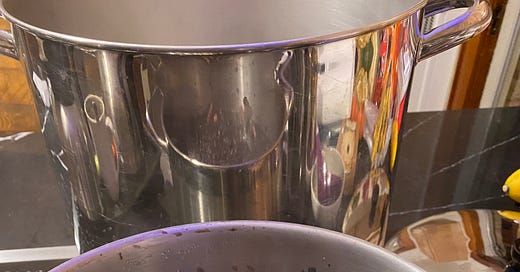


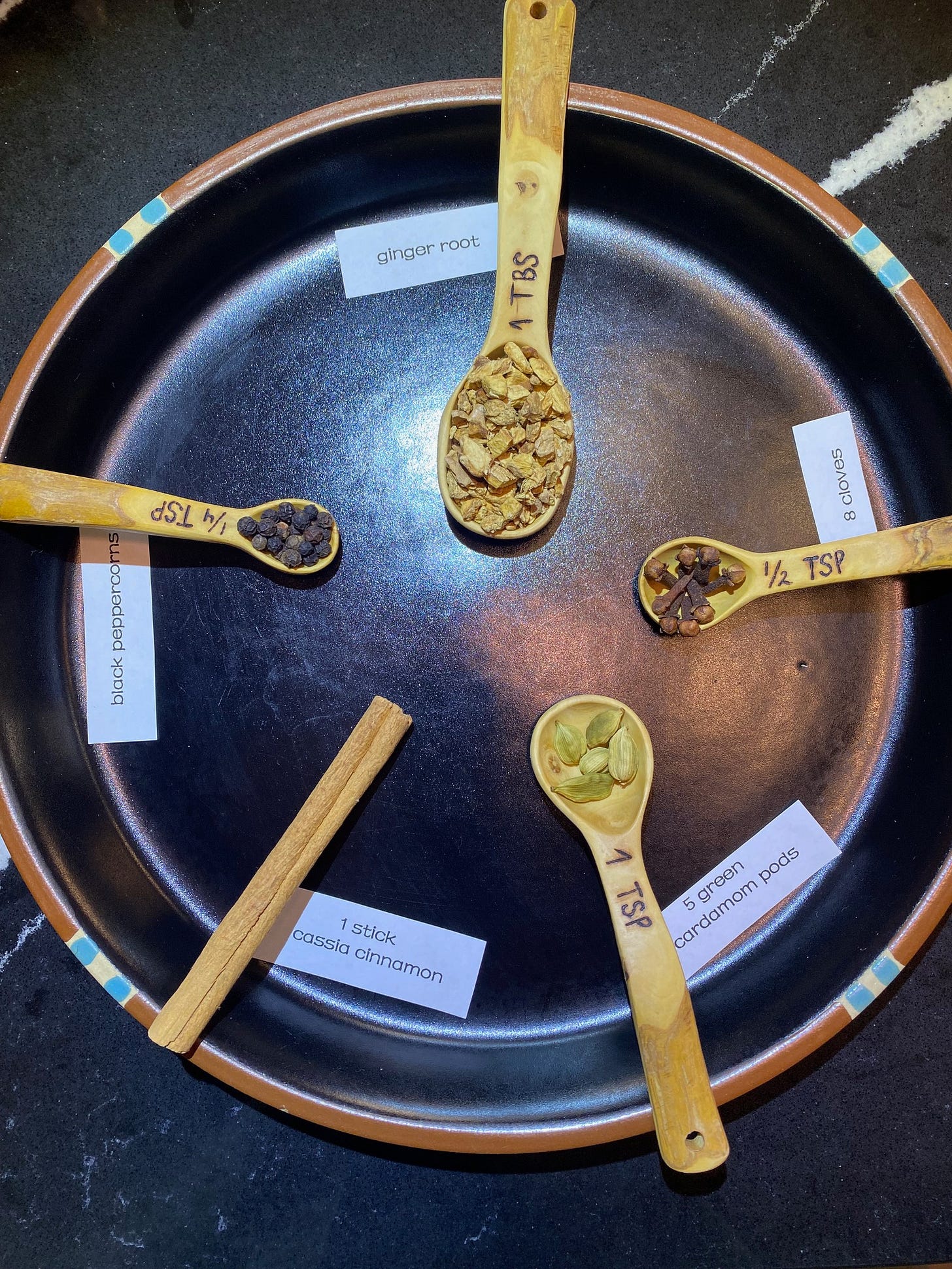
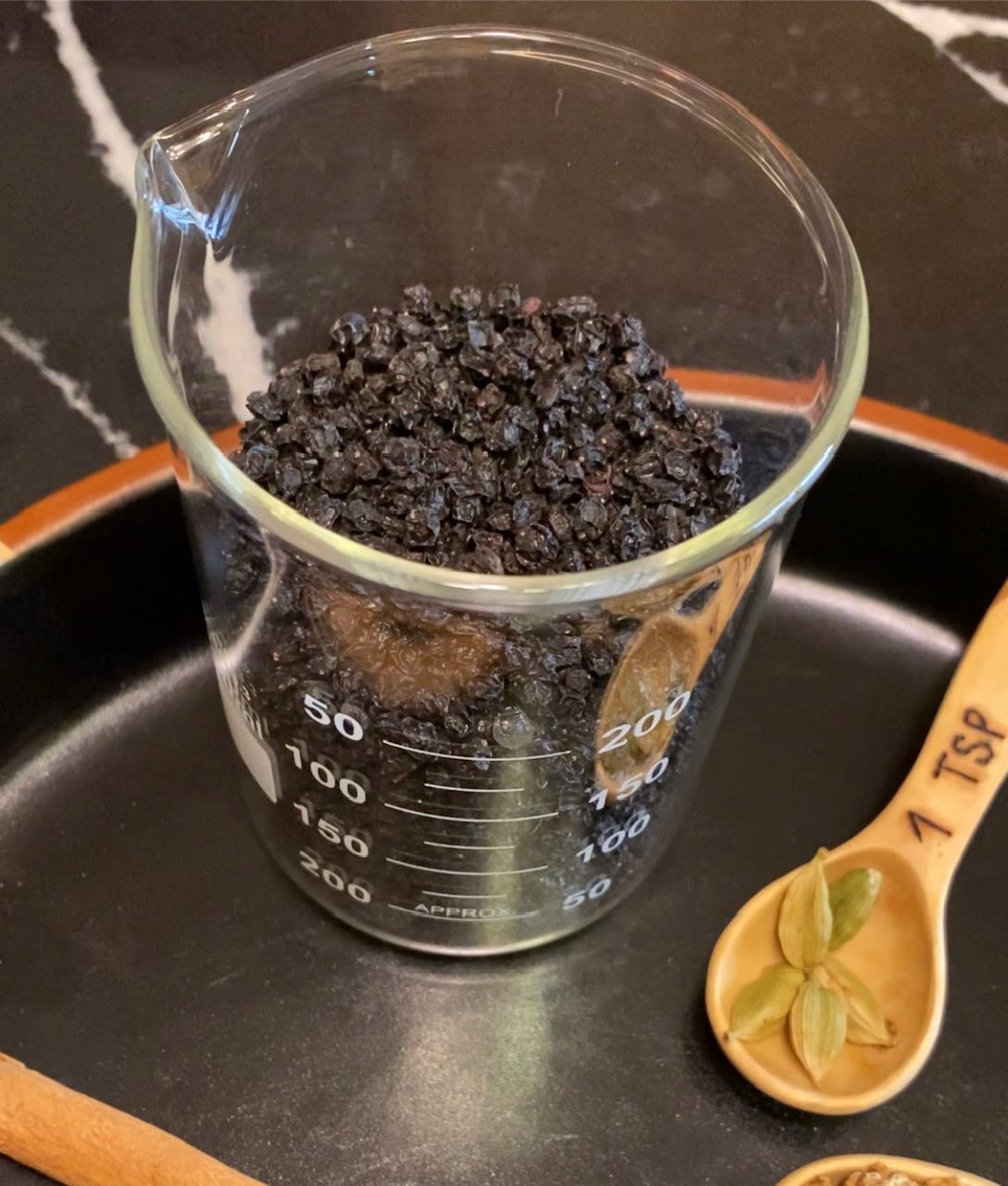
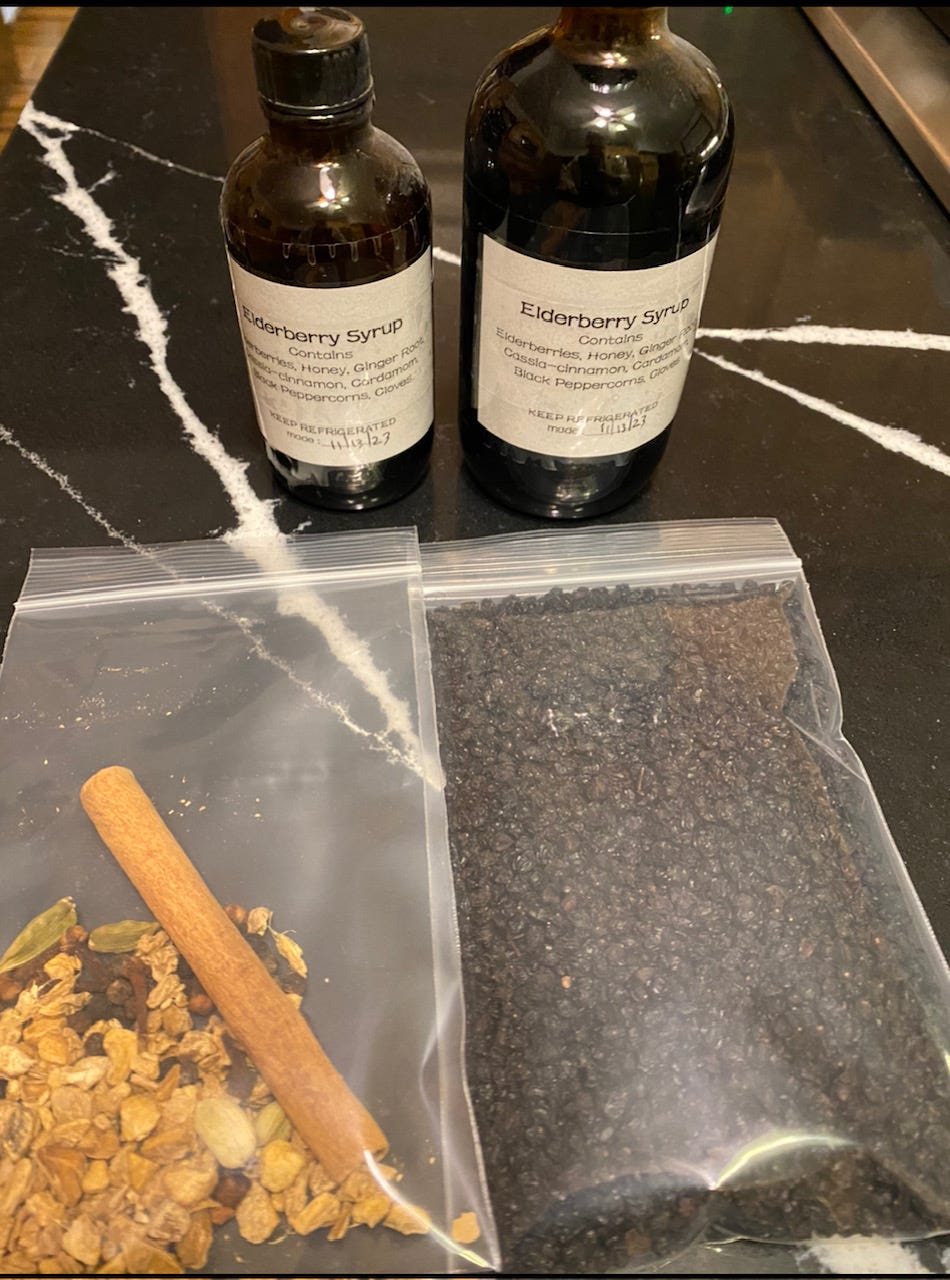



Get a Linux OS and use OpenShot. Even I figured out how to use it.
Thanks for sharing. I will take a note for future reference. Luckily I have a little elder tree in my garden. A branch fell off in the summer storms so I took cuttings. Now I have a elder sapling. No use for this winter but I will be sorted next winter. I did want to collect the blossom but it seems to make more sense to use the berries.